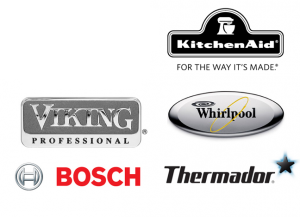The part(s) or condition(s) listed below for the symptom Refrigerator not cooling are ordered from most likely to least likely to occur. Check or test each item, starting with the items at the top of the page.
Most Frequent Causes for Refrigerator Not Defrosting
| Cause 1 Defrost Control Board The defrost control board determines how often to run the defrost cycle. If the board fails, the refrigerator will not go into the defrost cycle. Before replacing the defrost control board, first test the defrost heater and defrost thermostat. If the defrost heater and defrost thermostat are working properly, the defrost control board is likely defective. | Cause 2 Defrost Timer The defrost timer turns on the defrost heater several times throughout the day to melt any frost that may have accumulated on the evaporator coils. If the defrost timer is defective, it may not advance into the defrost cycle, or it may not send power to the defrost heater during the defrost cycle. To determine if the defrost timer is defective, slowly advance the dial into the defrost cycle. The compressor should turn off and the heater should turn on. If the timer does not send power to the defrost components or advance out of the defrost cycle within 30 minutes, this indicates that the defrost timer is not advancing. If the defrost timer is not advancing, replace it. | Cause 3 Defrost Heater Assembly The defrost heater assembly turns on several times throughout the day to melt away any frost that may have accumulated on the evaporator coils. If the defrost heater assembly is defective, the defrost system will not work, and frost will continue to accumulate on the evaporator coils. To determine if the defrost heater is defective, use a multimeter to test it for continuity. If the defrost heater does not have continuity, replace it. |
| Cause 4 Defrost Thermostat The defrost thermostat monitors the temperature of the evaporator coils. When the coils drop below a set temperature, the thermostat contacts close to allow power to flow to the defrost heater during the defrost cycle. In the defrost cycle, the defrost heater melts away any frost that may have accumulated on the evaporator coils. If the defrost thermostat is defective, the thermostat contacts will not close. As a result, the thermostat won’t provide power to the defrost heater. To determine if the defrost thermostat is defective, use a multimeter to test it for continuity. If the defrost thermostat does not have continuity when it reaches the low temperature of its operating range, replace it. | Cause 5 Defrost Sensor with Fuse The defrost sensor monitors the temperature of the evaporator. The defrost sensor has a fuse to back up the sensor in case the sensor fails. If the defrost sensor fails to shut off the defrost heater, the fuse will blow in order to shut off the defrost heater. If the defrost sensor fuse blows, the defrost system will not work, and the refrigerator will not defrost. The defrost sensor fuse is not resettable—if the defrost sensor fuse blows, you must replace the defrost sensor. To determine if the defrost sensor or fuse is defective, use a multimeter to test both the sensor and fuse for continuity. If either the defrost sensor or fuse does not have continuity, replace the defrost sensor. | Cause 6 Main Control Board The main control board regulates the power supply to all of the refrigerator components, including the defrost system. If the main control board is defective, it may stop sending voltage to the defrost system. Control boards are frequently misdiagnosed—before replacing the main control, first test all of the defrost system components. If none of the defrost system components are defective, consider replacing the main control board. |
